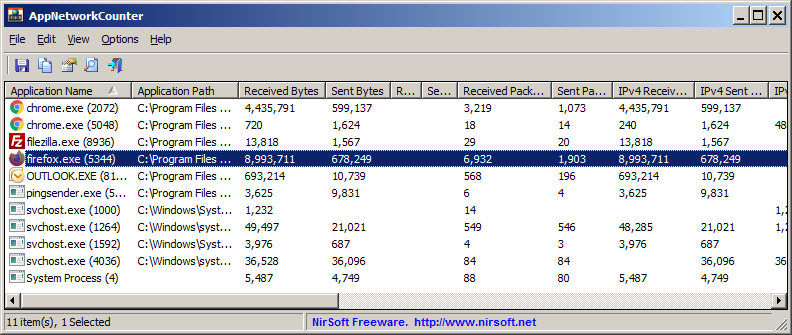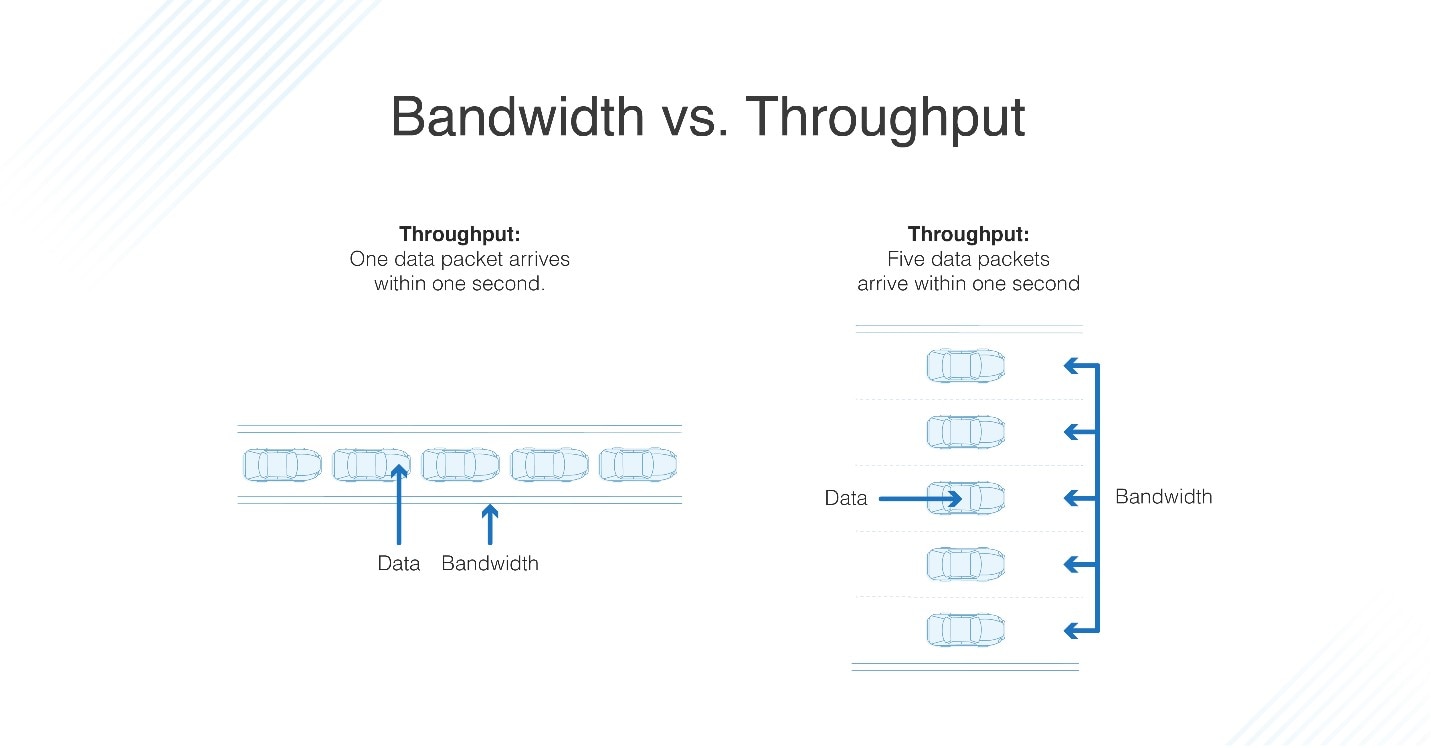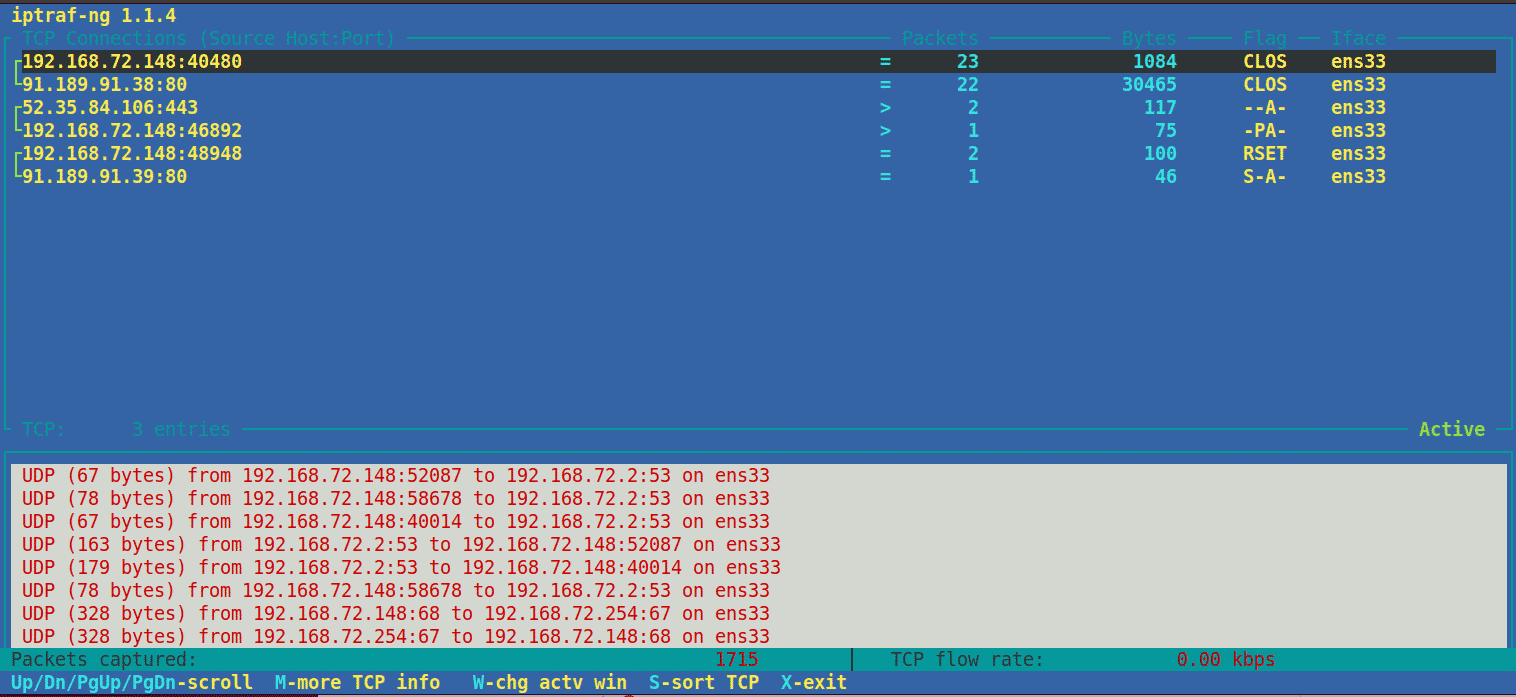How to Find Which Process Uses Lot of Network Bandwidth
The Receive Bsec column shows you at what speed a process is downloading something. 1 billion bits8 125 million bytes per second Bps total network bandwidth You may find it easier to express this number in megabytes which would come out to 125 megabytes per second Mbps.

Check Network Usage Per Process In Linux
Track Bandwidth Usage with Router.

. Linux See Bandwidth Usage Per Process With Nethogs Command. Sudo apt-get install vnstat and to run the vnstat you need to run the below command. Sudo apt-get install.
Nethogs will show you all the processes including name and pid using network traffic and exactly how much. Ive had a lot of success with nethogs. Vnstat is the simple tool to check the the internet bandwidth usage Here is the command to install it.
Procpidnetnetstat contains the bandwidth information per processwhere pid is the process id. Once such factor is Windows reserving 20 of your network bandwidth for special QoS Quality of Service essentially capping you at using 80 of your total available bandwidth. Stack Exchange Network Stack Exchange network consists of 179 QA communities including Stack Overflow the largest most trusted online community for developers to learn share their knowledge and build their careers.
The speed of your Internet connection largely depends on external factors you cannot control. For example if a client device in a network uses an 80211b network adapter it cannot accept a data transfer speed of more than 11 Mbps. Use Windows Resource Monitor.
The nethogs tool only works under Linux operating systems. Then fire the iptraf command to find out the traffic usage with interface and port details. Click on the network icon expand the current internet connection you are connected with and select Properties.
Also if you use wireless you need to pass the device to it. Vnstat Herecheck Monitor Network Bandwidth Usage are some more option for checking daily weekly monthly and top 10 days network bandwidth usage. Your computer will almost instantly act and you should see a drop in the bandwidth.
How fast packets or units of data travel from source to destination or sender to recipient determines how much information can be sent within a given timeframe. How to Find Whats Using My Bandwidth on my Home Network. A low network bandwidth also impacts network speed.
While i. Scan for Malware or Adware. Cat procpidnetnetstat awk f0 name1.
Let us see how to install and use Nethogs tool on Linux operating systems to see bandwidth usage per process. However sometimes there are software elements that influence your connection speed. Speed is one of the most important things used to measure network performance and we use throughput and bandwidth to measure it.
Sudo apt-get install nethogs. Users of Debian-based systems like Ubuntu can. There youll find two columns related to data consumption.
Type the following apt-get commandapt-get command. Highest score default Date modified newest first Date created oldest first This answer is useful. Show activity on this post.
If that doesnt solve it find out if you can uninstall the process. The first section Processes with Network Activity shows the Process name Process ID Send Receive and Total Bytessec information. Since NetHogs heavily relies on proc it currently runs on Linux only.
Use Capsa to Check Bandwidth Usage. If theres suddenly a lot of network traffic you can fire up NetHogs and immediately see which PID is causing this making it easy to identify programs that have gone wild and are suddenly taking up your bandwidth. Sudo tcpdump -nnvvXSs 1514 port 53133.
It shows two things the source address and its network port. Network and Metered network. The program is not default installed in most distros so you have to install it yourself using your package manager.
If theres suddenly a lot of network traffic you can fire up NetHogs and. To view network usage via the Task Manager access the Task Manager via keyboard shortcut CTRLSHIFTESC or type task manager in the Start Menu search box. With iftop its possible to find which connections produce most bandwidth but how to find the process.
If not restart your computer and check again. 53133 from 1000153133-741256810080 to run a tcpdump 1 to see the data in the packets being exchanged. Instead of breaking the traffic down per protocol or per subnet like most tools do it groups bandwidth by process.
It has to run as root but there are different ways you can sort the statistics like KBs or total bandwidth monitored since nethogs started. Using this command you can spot the process using up all your bandwidth in just seconds. This answer is not useful.
While i. Iptraf command will give you an output like the one shown below. The short answer is speed.
1 gigabit network 1 billions bits per second bps 1 bit 8 bytes. If you need this information you should check out nethogs. In the Task Manager select the App history tab.
If youre interested in what the process is transmitting over the network use the client port number for that particular connection eg. First install iptraf or iftop by either YUM or apt-get depending upon your distribution. Install nethogs on a Debian or Ubuntu Linux.
NetHogs does not rely on a special kernel module to be loaded. Check Data Usage on Router. Next f1 i2.
Check the option Metered connection. This is due to the bandwidth limitation of the client devices network adapter even if faster data transfers are possible within the network. Install it with command.
As far as I know iftop can not show which processes are using the bandwidth.

Get Network Usage Of Every Process On Windows

Bandwidth And Throughput In Networking Guide And Tools Dnsstuff

No comments for "How to Find Which Process Uses Lot of Network Bandwidth"
Post a Comment